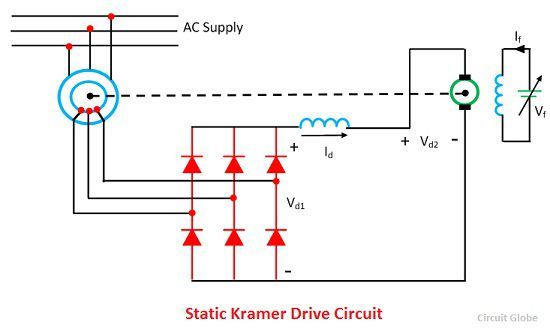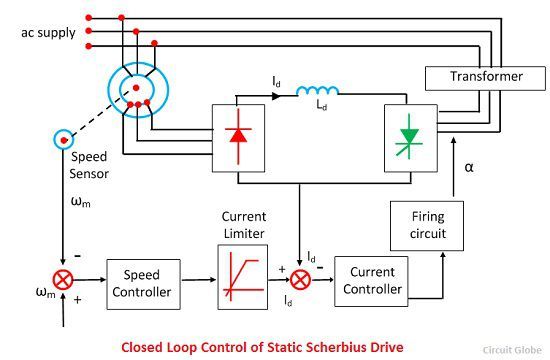Definition: The static Kramer-drive is the method of controlling the speed of an induction motor by injecting the opposite-phase voltage in the rotor circuit. The injected voltage increases the resistance of the rotor, thus controlled the speed of the motor. By changing the injected voltage, the resistance and speed of an induction motor are controlled.
The static Kramer-drive converts the slip power of an induction motor into AC power and supply back to the line. The slip power is the air gap power between the stator and the rotor of an induction motor which is not converted into mechanical power. Thus, the power is getting wasted. The static Kramer drives fed back the wasted power into the main supply. This method is only applicable when the speed of the drive is less than the synchronous speed.
Static Kramer Drive Working
The rotor slip power is converted into DC by a diode bridge. This DC power is now fed into DC motor which is mechanically coupled to an induction motor. The torque supplied to the load is the total sum of the torque produced by the induction and DC motor drive.
The figure shown below represents the variation of Vd1 and Vd2 with a speed of two values of DC motor field current. When the value of Vd1 is equal to the value of Vd2 then the steady state operation of the drive is obtained, i.e., at A and B for field current of If1 and If2.
The speed control is possible only when speed is less or half of the synchronous speed. When the large range speed is required, the diode bridge is replaced by the thyristor bridge. The relationship between the Vd1 and the speed can be altered by controlling the firing angle of thyristor amplifier. Speed can now be controlled up to stand still.



thanks
Thank you.
thank you for information
good definition …………thankxxxx
Good
Thank u sir